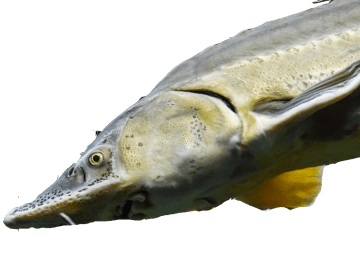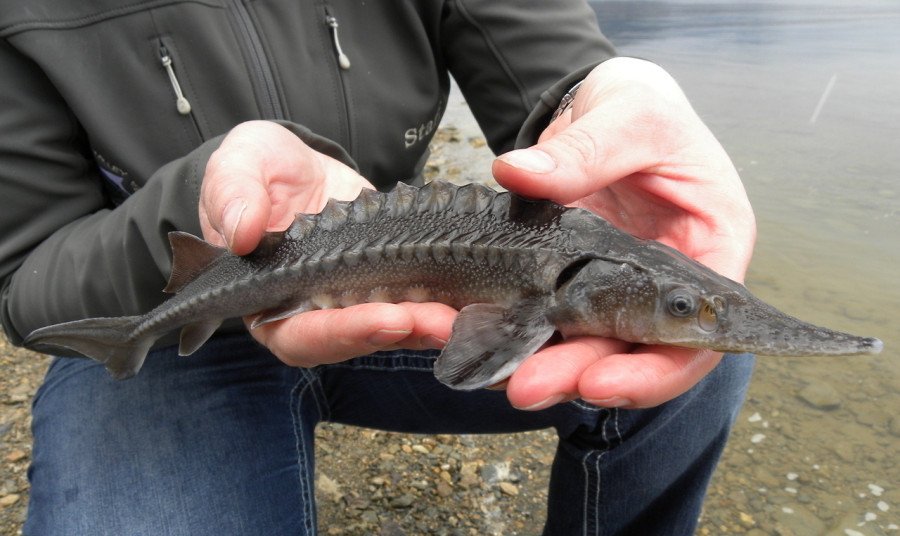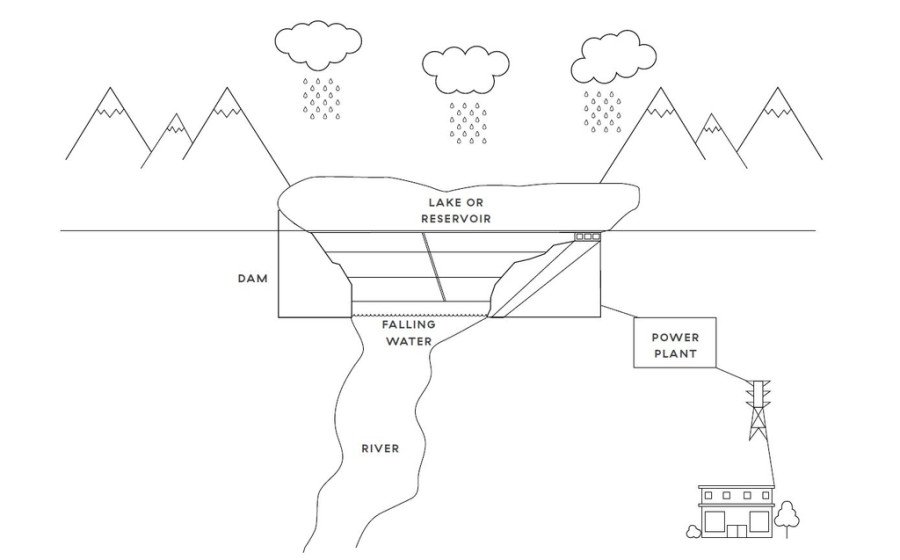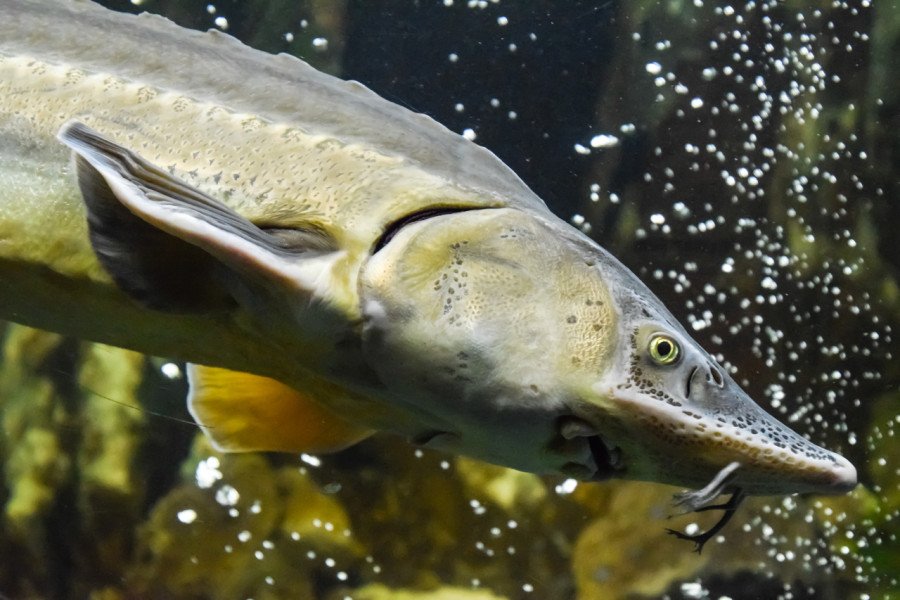Biodiversity and white sturgeon in B.C.
Who are the prehistoric white sturgeon? Find out through games, drawing and crafting, and learn how we can protect our ecosystems.
- Grade 3
- 3 activities
- 1.7 hours

Big idea
Living things are diverse, can be grouped, and interact in their ecosystems.
Learning objectives
Students will be able to:
- Understand the threats facing the endangered white sturgeon and how we are all interconnected
- Understand how our actions can affect others
- Share ideas and work cooperatively in group activities and games
- Listen, read and follow simple instructions, while being creative and developing new skills
Activities
BC curriculum fit
Grade 3 Science
Content
- Biodiversity in the local environment
- Energy is needed for life: producers, consumers, food chains
- Major local landforms
- Observable changes in the local environment caused by erosion and deposition by wind, water, and ice
Curricular competencies
Questioning and predicting
- Demonstrate curiosity about the natural world
Processing and analyzing data and information
- Experience and interpret the local environment
Evaluating
- Identify some simple environmental implications of their own and others’ actions
Grade 3 Art Education
Content
- Image development strategies
- Personal and collective responsibility associated with creating, experiencing, or sharing in a safe learning environment
Curricular competencies
Exploring and creating
- Create artistic works as an individual, using ideas inspired by imagination and purposeful play
Reasoning and reflecting
- Reflect on creative processes and make connections to personal experiences
Assessments
The activities in this unit provide an opportunity to assess individual students and groups on their ability to:
- Communicate how white sturgeon is endangered and how human impacts are affecting this prehistoric fish and all our ecosystems
- Understand our part in the ecosystem and that by saving energy we can help species like the white sturgeon
- Participate and cooperate in the games, drawing and craft activities
- Understand the choices we can make to use less energy and how these choices affect others
Background info
Endangered Species
The white sturgeon dwell in the Nechako, Fraser, Kootenay and Columbia Rivers of B.C. They are prehistoric fish and have not changed much in 175 million years. Adult white sturgeon can live to 100 years, reach 6 metres in length and weigh over 600 kg. They live deep in the bottom of our rivers and except for humans, adult white sturgeons have no predators. But despite this, today in B.C. they are endangered. The following are some reasons how and why this has happened.
- The construction of hydro dams has affected the river quality, quantity and speed of flows. As a result, the turbidity of the water decreases, making it clearer. This leads to predators eating the eggs or fry before they can grow to maturity.
- Over-fishing of their roe or caviar, and trophy fishing in the late 1800s nearly drove the white sturgeon to extinction.
- There is a decline in food sources, both for the juvenile who feed on larval insects, freshwater clams and snails, and for adults who feed on salmon and eulachon.
- Industrial and municipal pollution has affected water quality and concentrations of chemical contaminants like copper, zinc and heavy metals have been found in white sturgeons bodies.
In summary loss of suitable habitat, food, and historical over-fishing has endangered these river dinosaurs. For more information check out Supporting biodiversity and B.C.'s white sturgeon.
How BC Hydro supports wildlife habitats
BC Hydro uses the power of falling water to create clean, reliable and renewable electricity. However the creation of hydro dams has had an impact on our natural environment, one species being the white sturgeon. BC Hydro, partnering with others, is researching and undertaking remedial projects to help improve habitat conditions for the white sturgeon. For example the Columbia River Water Use Plan update April 2020 outlines some of these studies to better understand white sturgeon spawning habitat and development. The white sturgeon conservation aquaculture program has been releasing hatchery-raised sturgeon into the Columbia River annually and with great success since 2002.
For more information, read the following:
Other interesting facts about white sturgeon
- White sturgeons do not start reproducing until males reach about 15, and females about 25. However when they spawn they can produce between 700,000 to three million eggs. Ideally the fish spawn in areas where the eggs can fall to murky waters at the bottom of the rivers, so they are naturally protected against predators.
- White sturgeons have a very low survival rate in their first year and have many predators. Survival rates increase significantly after the first year.
Indigenous Peoples
Many Indigenous Peoples honoured the white sturgeon and treated the animal as an equal, deserving of respect, not something to own, buy or sell. Teach your class about the importance of inclusion and consultation with Indigenous Peoples when setting policy and addressing issues of conservation and protection of species. For example, many BC Hydro reservoirs are being negatively impacted by off-road vehicles, illegal fishing and hunting, and littering. A program called the Guardian Watch was formed to address these issues and take action. The Guardian Watch program is a partnership between local First Nations communities, BC Hydro, and Provincial government agencies to raise awareness about cultural heritage and ecological values on BC Hydro reservoirs.
For more information, visit the Fish and Wildlife Compensation Program website.
Youth can help
Electrical conservation is a key means to preventing the environmental impacts of increasing electricity demand. By using less and getting smart about our energy use, we can help preserve species, foster biodiversity and protect B.C. If we all work together, we can save our river dinosaurs!
Here are some simple tips to save energy:
- Turn off unnecessary lights
- Take shorter showers, preferably five minutes or less
- Unplug unused electronics
- Put on a sweater instead of turning up your heat
- Hang dry your clothes instead of using the dryer
Read more power smart tips on bchydro.com.




